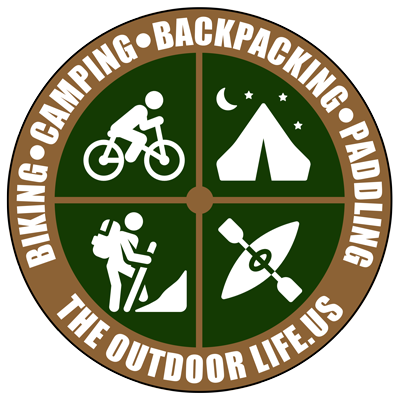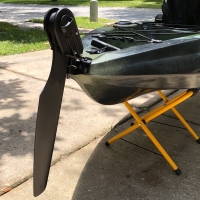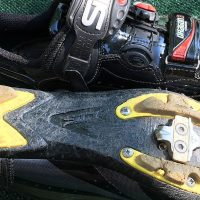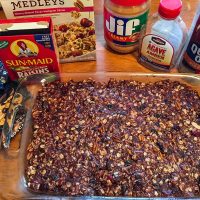
Choosing a Stand Up Paddle Board
A beginner's guide to SUPs!
There are plenty of opinions these days regarding what exactly is the best paddleboard for a beginner, but they lean more to the person's personal style and experience. They don't cover the basics and, therefore, don't give the reader enough information to make their own decision. For any person just entering the adventure of stand up paddleboarding, it all boils down to staying on the board. If you can't stay on the board, you won't like the experience and will likely give it up.
Stability = Staying on the Board
Stability is a function of how much side to side motion and rocking you have when standing upright on the board and what amount of flotation the board has with your body weight balanced. The length, width, and thickness all play a part in the stability of a board.
There are a handful of factors that go into a board's stability, which I will cover and which is why there is not just a single precise answer for what the correct board is for a beginner. There are also several other essential factors to think about, other than stability, when thinking about picking your very first board. Actual board weight, material, length, storage, transporting, and usage are just a few
But, if you'd like to read no further, a general rule is: a novice can, in all likelihood, go out and have a great time on any paddleboard that is at minimum 10'6" long x 32" wide x 4" thick or larger.
For those curious about all the other factors and how they affect your decision, keep reading.
Pump up the Volume
Let's get just a little geeky for a sec; essentially, Length x Width x Thickness = Volume and Volume = Max Load Weight Limit. The more volume a board has, the more stable it's likely going to be, and the more total weight it will likely carry. Volume is not necessarily the only component, though, as a wider board will generally carry more side-to-side surface area across the water and be much less likely to tip sideways, making it more stable. For example, a shorter, wider board will be more stable than a longer skinner board, even if both have the exact volume.
BOTE Aero HD Inflatable
Length, the bigger, the better?
Most people assume, "If I merely buy the biggest board available, I really should be fine." This is more than likely correct for being able to stand on the board, nevertheless when you are looking for maneuverability, the longer a board gets, the more difficult it becomes to maneuver. The length of the paddleboard a beginner prefers should really be determined more by the person's body weight and the board's width than his or her level of experience.
Weight, how much weight can I lift overhead?
The board's weight is significant when transporting it handling the board. If you can't lift the board to put it on or off your vehicle, there's a pretty good possibility you're not going to be taking it down to the river all that often. Manhandling a 10-12ft board, even a light one, can be challenging on a good day, but add a little wind to the mix, and it goes south quickly! If weight is an issue, you could pick a smaller wider board, choose a board made from different materials (Epoxy, Carbon Fiber, Bamboo, Wood even PVC) or an Inflatable SUP. This industry has generated some fantastic advancements within the inflatable board market where they can be light, rugged, portable, and for a great price. Be sure to check the specific weight of the paddleboard while looking through your reviews.
Advantages of an Inflatable SUP Board
The main advantage of the iSUP is relatively obvious: it can quickly be deflated for easy transportation and storage. Inflatable paddleboards can be transported by car or plane, as they fit inside a small backpack when deflated. There's also no need to spend the money on a car rack to take your board to the water; just throw it in the trunk and inflate it by the water's edge. As transporting your board is easier, you're much more likely to get out on the water regularly.
Inflatables are excellent choices for shallow river paddling
If you're just getting started with paddling, an inflatable may be a better choice because they tend to have more volume, typically making them more stable when inflated properly. They're usually thicker than a regular rigid board and not as streamlined, making them slightly slower but more comfortable to learn on. They are much softer to land on should you fall. Most have textured tops that help you grip the board, which is a big help if you're new to paddleboarding.
How are you transporting your board, and will it fit?
Stand up paddleboards are naturally gigantic. Sure, a 12'6" paddleboard seems to be a good choice when looking online, but will it fit in or on your vehicle as well as in your house or storage area. Inflatables typically come in a backpack style bag and can easily fit in most vehicles and hall closets. They are much easier to get up and downstairs, especially if you live in an apartment or condo.
What kind of docking location are you utilizing?
If you're going to put the paddleboard in the water in an area containing rocks, docks or other sorts of very hard types of surface and your level of experience isn't top-notch, there is a possibility that at one time or another you could be running into one of these hard objects. Even just a minor bump can easily place a decent ding in your completely new fiberglass board. More rugged choices are inflatable or polyethylene construction materials.
Naturally Gigantic
What activities are you planning to be doing with your board?
There are so many things men and women use their paddleboards for, whether it be cruising, racing, surfing, fitness, yoga, or fishing. Every one of these distinctive activities has specific boards, and several boards can be used spanning numerous categories. It really is good to purchase a board that is developed for the activities you might be doing, however, it is not always required.
BOTE Rackham Gatorshell Hard Board
In conclusion:
Start with Width and the Max Weight that you will be paddling with. As a beginner, stay around 32"-34" for board width for stability. When looking at the Max Weight, consider your total paddling weight first. If you are 150lbs and wish to paddle with your 40lbs dog, that's 190lbs. Then add 10lbs for gear (life jacket, lunch, water, etc.), so now you are at 200lbs. Ideally, you want to be 50lbs or more under the Max Weight the board will carry. Therefore you would need a board capable of at least 250lbs.
Inflatables are better at:
- More Durable
- Softer when you fall
- Generally Lighter
- Less Storage Space
- Easier to transport or travel with
- Higher Max Weight Limits
- Tend to be more stable
- Can handle more varied settings such as Flat Water, Small Waves, Rivers, Shallow Water, even whitewater
Author's note: Just because the Inflatables list is smaller, doesn't mean the Hardboards are better. The top items in these lists, are the significant factors to consider.
Hardboards are better at:
- Less effort to paddle: faster in the water and glides longer maintaining momentum longer
- Greater maneuverability and nimbleness
- Can handle windy conditions much better
- Handles larger waves much better
- No pump gear and or pump-up time (10-15+ minutes), don't have to deflate when done
- No risk of punctures: will not unexpectedly deflate while on the water from a leak or puncture
- With displacement hulls, they cut through the waves vs. powering over them
- No Flex (very noticeable in rougher waters)
- Easier to manage: cleaning, repairing, less gear to bring to keep track of, gets you on the water much faster
- No shape limitations: have finely tuned rails and are tapered (less thick) in the nose and tail area
- Longevity and seam issues
As a general rule: the average 4" thick fiberglass paddleboard with a width around 32"-34", at 9'6" can accommodate about 200lbs, 10'6" - 250lbs, and 11'6" - 325lbs. Inflatables are typically thicker (averaging about 6") and can hold anywhere from 50-200 extra pounds.












I see a made the photo cut.😎